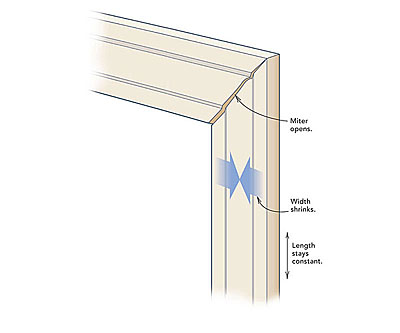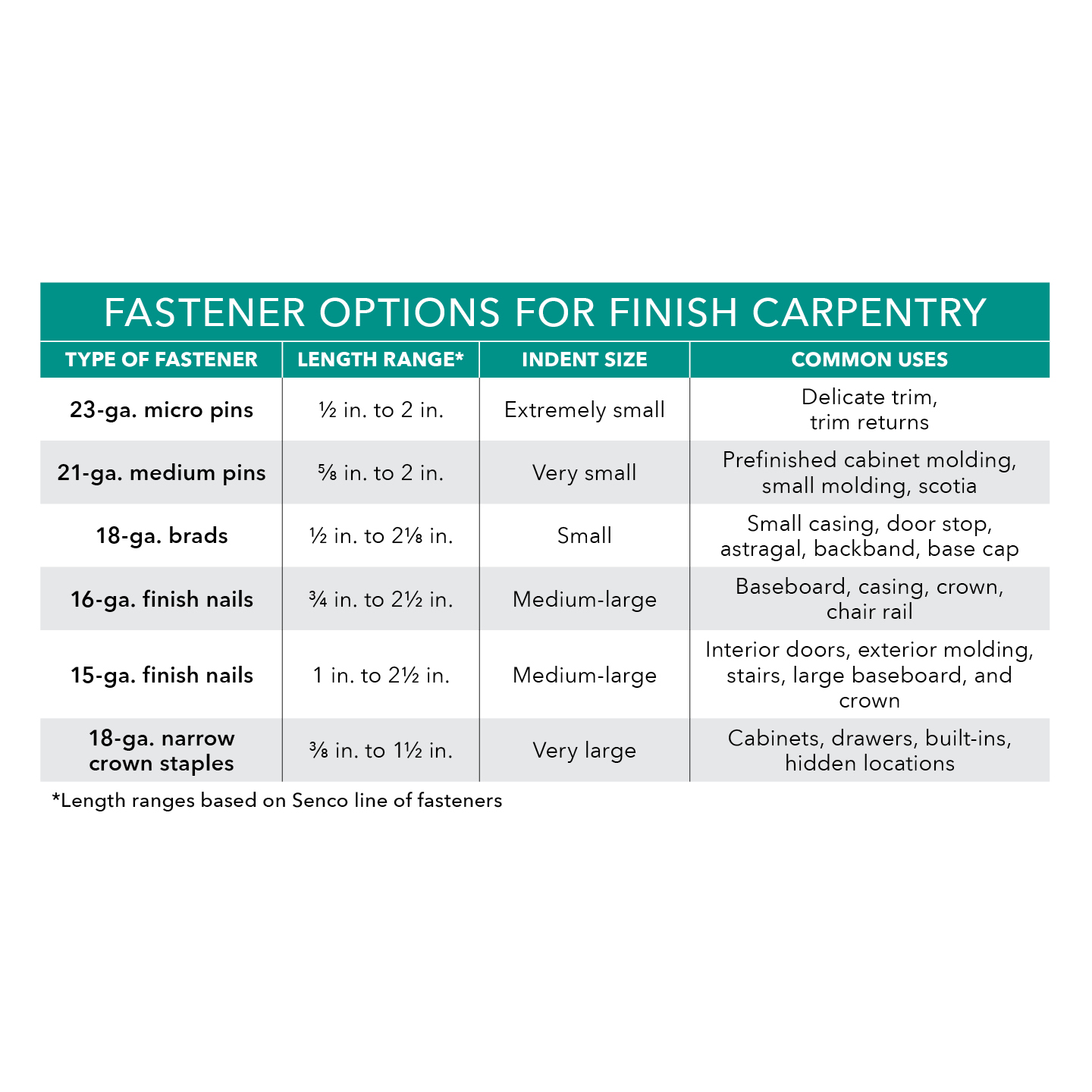Q:
Why do the inside corners of mitered window and door casings open up during dry winter months? I spline and glue miters, and while most of them stay put, there are always some that open up. And they always open on the inside rather than on the outside corner. What dynamics are at play here? What else can I do to ensure tight miter joints?
Mike Guertin, East Greenwich, RI
A:
Andy Engel, a builder in Roxbury, Connecticut, replies: As it dries out, wood shrinks to a much greater degree across its width than along its length. So as the casing shrinks across its width, the lengths of both edges essentially stay the same, changing the angles that you cut for the miters. The crossgrain shrinkage tends to draw the long points together, and thus constrained, the remaining movement is all toward the outside, which pulls open the inside of the miter (see drawing). Because wider lumber moves more than narrower lumber, miter joints in wide casings are particularly susceptible to opening up.
If you miter wide wood casings, and the humidity level in the house swings substantially, the joints will open up. Controlling the humidity within a range of a couple of percentage points year round would eliminate the problem, but that’s difficult in much of the country. Splining and gluing help, but wood movement is a powerful force. Other options are narrower casings, materials less prone to movement (plywood or medium-density fiberboard), and different joints. Butt joints were used frequently in older houses with wide casings.


























